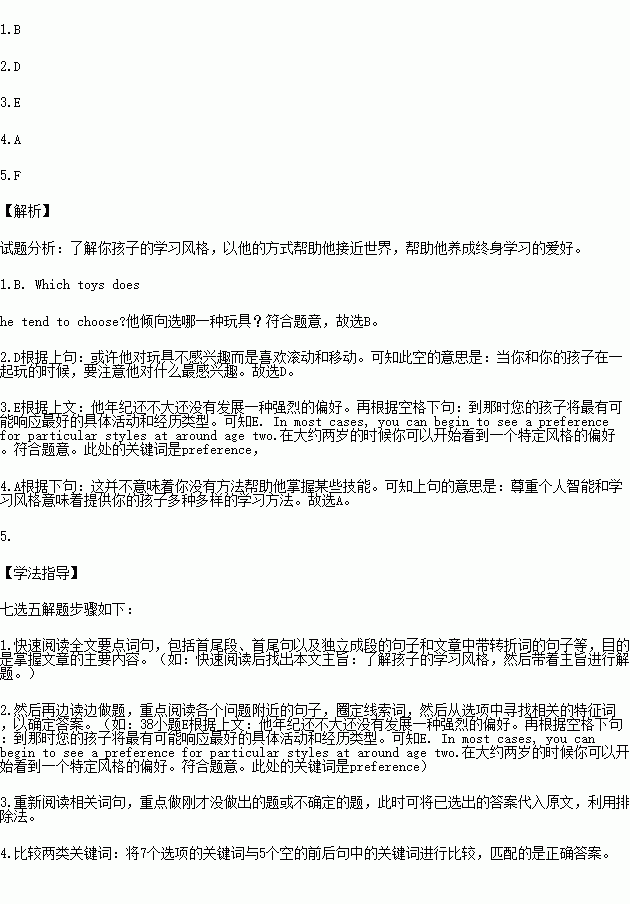题目内容
根据短文内容,从短文后的七个选项中选出能填入空白处的最佳选项。选项中有两项为多余选项。
To understand your child’s learning style, observe him as he plays. 1. Chances are, you’ll notice that his favorites have something in common. Perhaps they all have bright colors and different patterns or interesting shapes, or make sounds. Then look at how he plays: Does he tend to look at objects carefully or to hold and feel them in his hands? Perhaps he is less interested in toys than in rolling and moving around. 2.
Most children have a number of different intelligences and learning styles and can be engaged in a variety of ways. If you don’t see a strong preference for particular toys or games, it means that your child has more than one primary intelligence or that he isn’t old enough to have developed a strong preference. 3. By then your child will most likely respond best to specific activities and types of experiences.
4. This doesn’t mean that you have no way to help him master certain skills—almost anything can be taught in a way that works well for a specific intelligence. When you identify and respond to your child’s intelligence and learning style, you help him approach the world on his terms. 5.
A. Respecting individual intelligences and learning styles means offering your child a variety of ways to learn.
B. Which toys does he tend to choose?
C. You should not force your child to do what he doesn’t like.
D. As you play with your child, pay attention to what he is most interested in.
E. In most cases, you can begin to see a preference for particular styles at around age two.
F. Following his strengths can make mastering new skills less frustrating and can help him develop a lifelong love of learning.
G. Telling your child his learning styles is a good way to improve his studies.
 学业测评一课一测系列答案
学业测评一课一测系列答案 小学课时作业全通练案系列答案
小学课时作业全通练案系列答案
